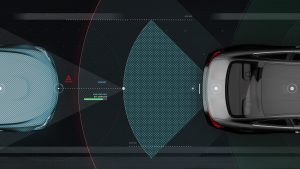Key Takeaways
- Micro-optics shaping the future of autonomous driving technology, enhancing safety and performance in the automotive industry.
- These optics crucial for laser beam shaping and wavefront sensing, improving visibility and energy efficiency in vehicles.
- Shack-Hartmann wavefront sensors, powered by micro-optics, enable high-resolution imaging for autonomous navigation.
- These optics drive innovation in automotive applications, including lighting systems and optical sensors, for safer and smarter vehicles.
Micro-Optics: Driving Automotive Innovation
In an era marked by rapid technological progress and innovation, micro-optics has emerged as a transformative force with applications spanning various industries. Among these sectors, the automotive industry stands out as a significant beneficiary of micro-optics technology. These minuscule optical components, typically just a few millimeters in diameter, are playing a pivotal role in shaping the future of vehicles, from enhancing safety to revolutionizing autonomous driving systems. In this article, we will explore why they are of paramount importance in the automotive industry and how they are driving innovation and progress in this field.
Micro-Optics Advancements in Automotive Laser Systems
The automotive industry is also embracing micro-optics for laser beam shaping and wavefront sensing applications. Micro-optical elements are instrumental in shaping laser beams for various purposes, including laser-based sensors, LiDAR (Light Detection and Ranging) systems, and advanced driver-assistance systems (ADAS). These systems rely on precise laser beam control to accurately detect obstacles, navigate roads, and ensure the safety of passengers.
Shack-Hartmann wavefront sensors, a technology at the heart of optical coherence tomography systems, benefit greatly from micro-optics. These sensors enable high-resolution imaging and are crucial in the development of autonomous vehicles, where precise environmental sensing is essential for safe and reliable operation. By harnessing the power of these optics, automotive manufacturers can achieve superior sensing capabilities, driving advancements in autonomous driving technology.

Manufacturing Advancements
One notable category of micro-optics, wafer-level optics, follows a manufacturing process akin to microchips. Thousands of lenses are fabricated on an industry-standard 8-inch substrate, making simultaneous processing of numerous optics on a single wafer possible. This mass production approach is crucial for meeting the growing demand for micro-optics across various industries.
However, it’s worth noting that micro-optics fabrication still lags behind the level of automation seen in the semiconductor industry. Many production steps require manual intervention, contributing to limitations in scalability and cost-effectiveness. Despite these challenges, ongoing research and development efforts are expected to bring advancements in automation and efficiency to the manufacturing.
Micro-Optics in the Automotive Industry
In the automotive industry, micro-optics(insert a link: https://staging.avantierinc.com/custom-optics/micro-optics) are leveraged in various ways to enhance vehicle performance, safety, and functionality. Here are some key areas where they are making a difference:
- Headlight and Taillight Systems: They enable precise control of light beams, improving visibility, energy efficiency, and overall lighting performance.
- LiDAR Technology: They are integral to LiDAR systems used in autonomous vehicles, enhancing their ability to sense and navigate the environment.
- Optical Sensors: They play a crucial role in optical sensors used for detecting obstacles, monitoring driver behavior, and ensuring safe driving conditions.
Conclusion
Micro-optics have emerged as a pivotal technology driving innovation in the automotive industry. From advanced lighting systems and laser beam shaping to optical sensors and communication networks, they play a multifaceted role in shaping the future of vehicles. As demand for safer, more efficient, and connected automobiles continues to grow, they will remain a key enabler of progress in the automotive sector. With ongoing research and development efforts, we can anticipate even more remarkable advancements in this field, ultimately making vehicles of the future safer and smarter than ever before.
GREAT ARTICLE!
Share this article to gain insights from your connections!




